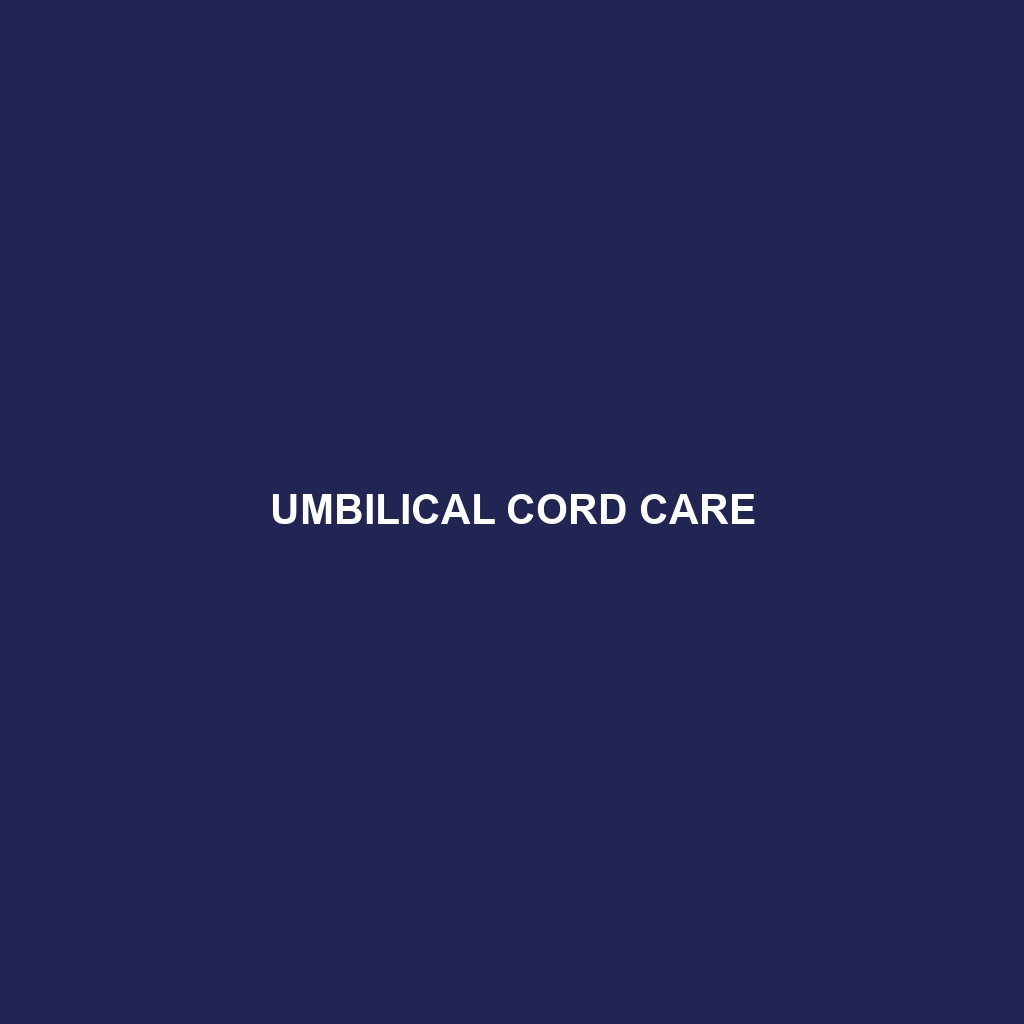Umbilical Cord Care:
Definition and Description of Umbilical Cord Care:
Umbilical cord care refers to the hygiene practices and medical attention required to manage the umbilical cord stump after birth. The umbilical cord connects the fetus to the placenta, providing essential nutrients and oxygen during pregnancy. After delivery, the cord is clamped and cut, leaving a small stump that typically falls off within a few weeks. Proper care is essential to prevent infections and promote healing in the area.
Causes of Umbilical Cord Care:
The need for umbilical cord care arises primarily from the natural processes following childbirth, including the separation of the cord stump from the baby’s abdomen. Factors contributing to complications may include poor hygiene, external irritants, and issues such as low blood circulation in the cord. Genetic predispositions can also influence how well an infant’s body heals after the cord is cut.
Associated Symptoms of Umbilical Cord Care:
Common symptoms associated with poorly managed umbilical cord care might include:
- Redness around the stump
- Foul odor emanating from the stump
- Presence of pus or discharge
- Increased sensitivity or tenderness
- Fever in the infant
Diagnosis of Umbilical Cord Care:
Diagnosis typically involves a physical examination by healthcare professionals. Pediatricians assess the condition of the cord stump, looking for signs of infection or abnormal healing. In some cases, they may conduct blood tests if systemic infection is suspected. Parents are encouraged to report any concerning symptoms for prompt evaluation.
Risk Factors for Umbilical Cord Care:
Infants at greater risk for umbilical cord issues include:
- Premature babies with underdeveloped immune systems
- Babies born via cesarean section
- Infants with low birth weight
Complications of Umbilical Cord Care:
If left untreated, complications can include severe infections, such as omphalitis, which may lead to systemic infection and require hospitalization. Other potential long-term effects include scarring or other issues in the abdominal area, which can affect the baby’s overall health and development.
Treatment Options for Umbilical Cord Care:
Management of umbilical cord care involves keeping the stump clean and dry. Parents may be instructed to:
- Clean the stump with mild soap and water during baths.
- Allow the stump to air dry.
- Avoid covering the stump with diapers or tight clothing.
If an infection is suspected, topical ointments or oral antibiotics may be prescribed by healthcare providers.
When to See a Doctor for Umbilical Cord Care:
Parents should seek medical attention if they notice any signs of infection, such as persistent redness, swelling, a foul smell, or if the infant develops a fever. Quick intervention is critical to avoid complications.
Prevention of Umbilical Cord Care:
To prevent complications related to umbilical cord care, parents should follow these tips:
- Maintain stringent hygiene practices when handling the stump.
- Ensure that the baby’s environment is clean.
- Regularly monitor the stump for any changes.
Statistics and Prevalence of Umbilical Cord Care:
Studies show that up to 5% of newborns may experience infections related to umbilical cord care. Awareness and education about proper care techniques can significantly reduce this risk.
Personal Stories or Case Studies about Umbilical Cord Care:
Parents often share their experiences related to umbilical cord care in parenting forums, illustrating both successful management and challenges faced. Healthcare professionals emphasize the importance of education to prevent adverse outcomes.
Myths and Misconceptions about Umbilical Cord Care:
Common myths include the belief that alcohol should be applied to the stump, which is no longer recommended due to the potential for irritation. It’s essential to rely on current medical guidelines for effective cord care practices.
Support and Resources for Umbilical Cord Care:
Support groups and informational resources are invaluable for new parents. For comprehensive assistance, visit this support page for additional resources and help.
Conclusion about Umbilical Cord Care:
In summary, proper umbilical cord care is vital for the health and well-being of newborns. By following best practices, recognizing symptoms of potential issues, and seeking timely medical assistance, parents can help ensure their baby’s safe recovery following birth.
